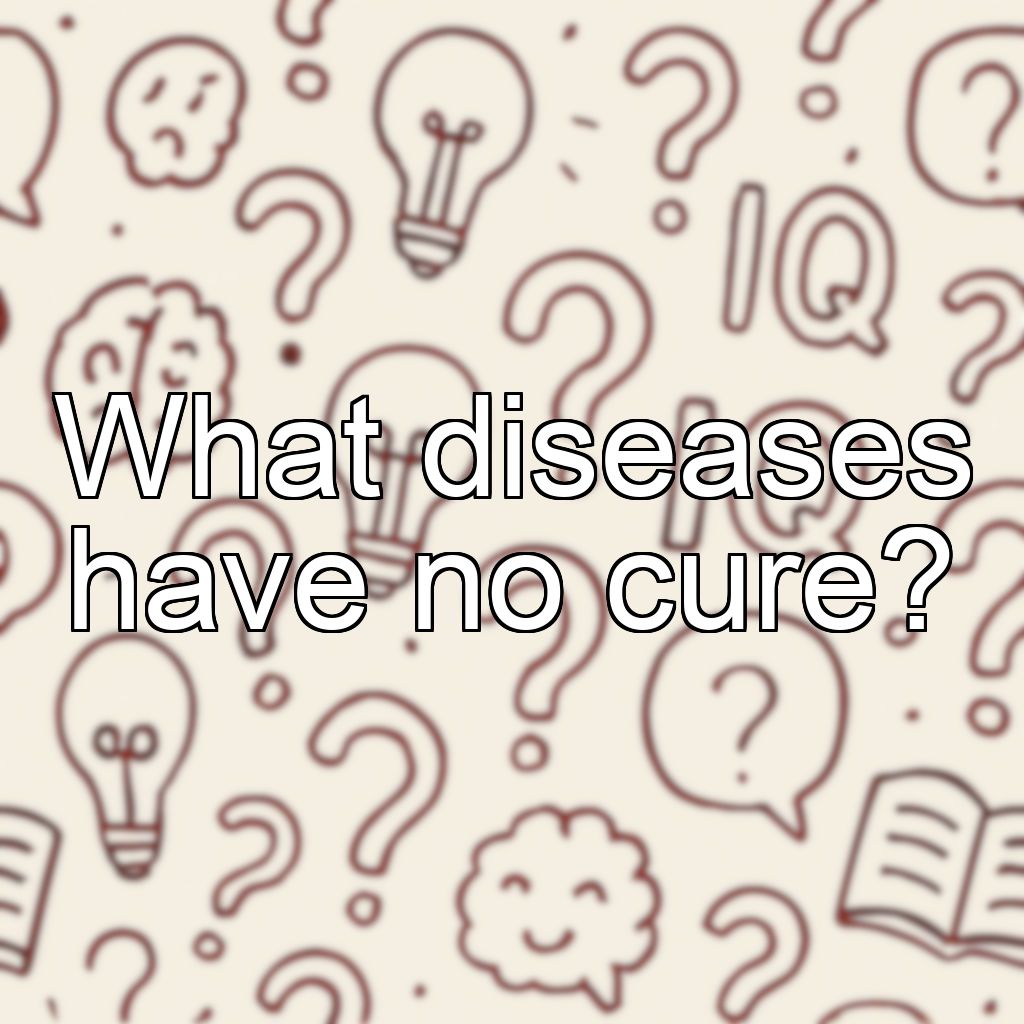What diseases have no cure?

Diseases Currently Without a Cure
There are several diseases and conditions for which there is currently no known cure. While some can be managed with treatment to improve quality of life or slow progression, a complete cure is not yet available. Here are some notable examples:
- HIV/AIDS: Antiretroviral therapy allows people to live longer, healthier lives, but the virus remains in the body.
- Alzheimer's Disease: Treatments can manage symptoms and slow progression, but there is no cure to stop or reverse the disease.
- Type 1 Diabetes: Insulin therapy manages blood sugar, but the underlying autoimmune destruction of insulin-producing cells cannot currently be reversed.
- Parkinson's Disease: Medications and therapies help control symptoms, but cannot cure or stop the neurodegeneration.
- Cystic Fibrosis: Treatments have improved longevity and quality of life, but do not cure the genetic disorder.
- Multiple Sclerosis (MS): Disease-modifying therapies slow progression, but there is no cure for the immune-mediated attack on nerves.
- Rheumatoid Arthritis: Treatment can control symptoms and slow joint damage, but does not eliminate the disease.
- Certain Cancers (Advanced Stages): Many cancers, especially in advanced stages, cannot be cured, though some can be managed for long periods.
- Lupus: Medications can control symptoms and improve outcomes, but lupus itself cannot be cured.
- Chronic Hepatitis B: Antiviral medications control the virus, but do not cure it.
Other Notable Incurable Conditions
- Herpes Simplex Virus (HSV) infections
- Amyotrophic Lateral Sclerosis (ALS)
- Polycystic Kidney Disease
- Prion Diseases (e.g., Creutzfeldt-Jakob Disease)
- Huntington's Disease
Note: Medical research is ongoing, and new treatments or potential cures may become available over time. Early diagnosis and modern therapies have significantly improved outcomes for many of these conditions.